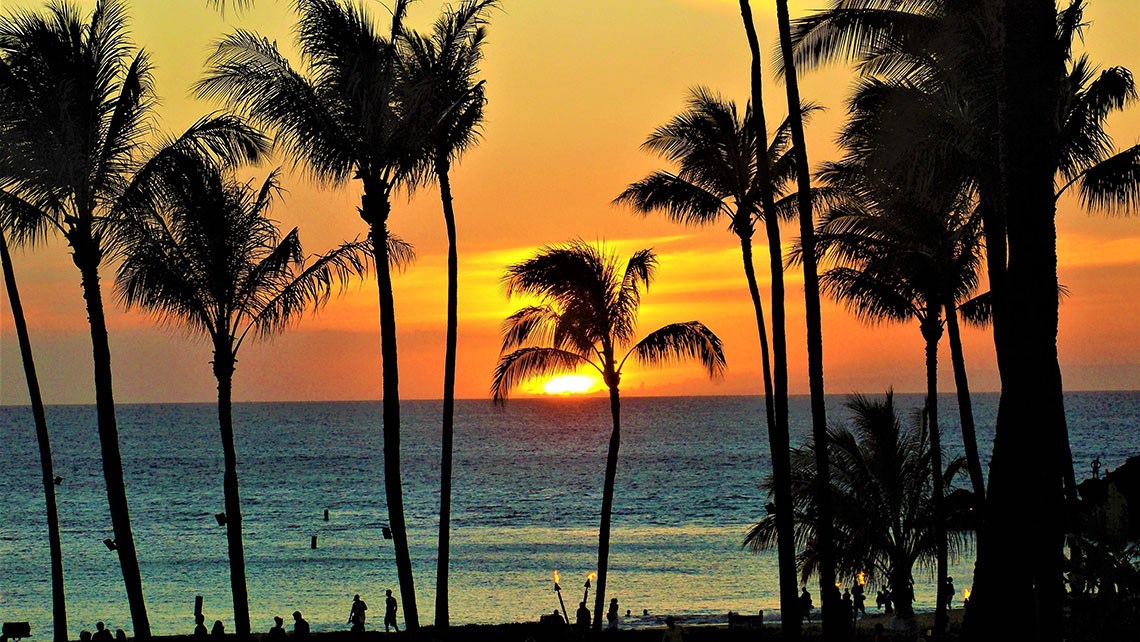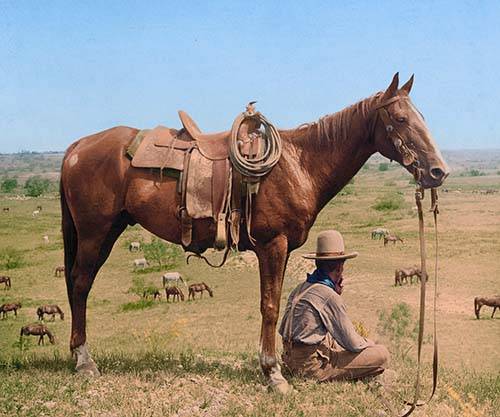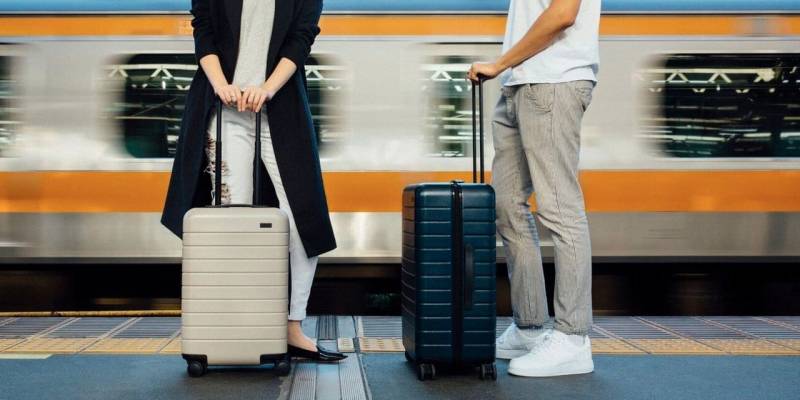A strong majority of domestic visitors to Hawaii are willing to pay more for Native Hawaiian cultural experiences, locally grown food and sustainable activities, a new study from the University of Hawaii revealed.
Published Sept. 20 in the Journal of Risk and Financial Management, the study surveyed more than 450 mainland U.S. residents on their impressions of Hawaii and appetite to pay extra for particular types of services and products.
Roughly three out of every four respondents (76%) said they were willing to pay more for authentic Hawaiian cultural experiences. Among those willing to dig deeper in their pockets for the activities, 35% said they would be willing to pay up to 10% more in extra fees. Approximately 20% said they would pay upward of 15% extra.
The biggest surprise for me was the willingness of people to pay extra for Hawaiian cultural activities and things that are more sustainable, said Jerry Agrusa, study co-author and University of Hawaii at Manoa professor of hospitality and tourism management. The numbers are so high.
Additionally, more than 70% of those surveyed indicated they were willing to pay more to experience and support sustainable tourism experiences, with one-third saying they would pay an extra 10%.
Nearly 80% of participants also said they would be willing to pay more for local food, including meat and fish, in support of Hawaiis producers, with more than 37% saying they would be willing to increase their restaurant bill by 11% or more.
Agrusa said the responses to the food and sustainability questions are likely linked, as locally grown food has a much smaller carbon footprint than goods shipped across the Pacific.
One of the goals for Hawaii is to be more self-sufficient with food, he said. When I speak to hotels or large chains, their concern with locally grown products is that the small family farms we have here dont have the capacity to keep up and meet the demand. But nearly 20% of the people surveyed said they were willing to pay 16% more or greater for locally grown food.
Agrusa said he hopes the results of the study spur investment in agriculture and more partnerships between hotels and farms, ranchers and fishermen and that it will lead to a reduction in the approximately 95% share of food that comes from outside the state.
While he has so far only examined the sentiment of the U.S. market, domestic travelers accounted for 65% of all visitors to the Islands pre-pandemic. In 2019 U.S. domestic travelers made up 6.8 million of the 10.4 million visitors to Hawaii, and this year, with pandemic protocols in place and tight restrictions on international travel, U.S. mainland travelers accounted for 99% of visitor arrivals.
Agrusa said that, in general, the Native Hawaiian population and other state residents do a good job of informally policing cultural activities for offerings that are inaccurate, misleading, or exploitative. But, in order to give visitors more confidence they are spending their money on a culturally authentic experience, the state could issue certificates similar to a restaurant health and safety report card.
People want to learn about Hawaiian culture, and theres significant evidence that they are willing to pay more for it, he said. Its what drives people here over other sand and sea destinations.
Agrusa said sharing information is vital for the further development of tourism in a sustainable manner in the Aloha State. That includes communicating what is expected of visitors as well as information that will improve their experience. He said a new video campaign on responsible travel from Hawaiian Airlines shown on their flights is a good example of the types of messaging and marketing supported by the studys findings.
He also pointed to the Hawaii Tourism Authoritys Malama campaign launched in June of this year, which shares messaging with visitors on how to be more responsible travelers while also developing a menu of voluntourism experiences, such as planting native plants or assisting with the restoration of traditional fish ponds, that are accompanied with visitor incentives such as a free extra nights stay at a participating hotel.
Sharing the knowledge of what we expect is vital, Agrusa said. [HTA president] John de Fries says aloha is to give but also to get back. Visitors need to understand that they cant just take, they need to be respectful of local culture.
Agrusa also said he believes marketing campaigns that target families with information on Hawaiis environmental stewardship and cultural activities could be particularly fruitful.
One of the things that families want is ... something educational when on vacation, something that the children bring back. and this includes learning about the local culture, Agrusa said. Families want a learning environment for their child. Every parent wants to give their kids a step up. Although when things become too educational, you start to lose people.A strong majority of domestic visitors to Hawaii are willing to pay more for Native Hawaiian cultural experiences, locally grown food and sustainable activities, a new study from the University of Hawaii revealed.
Published Sept. 20 in the Journal of Risk and Financial Management, the study surveyed more than 450 mainland U.S. residents on their impressions of Hawaii and appetite to pay extra for particular types of services and products.
Roughly three out of every four respondents (76%) said they were willing to pay more for authentic Hawaiian cultural experiences. Among those willing to dig deeper in their pockets for the activities, 35% said they would be willing to pay up to 10% more in extra fees. Approximately 20% said they would pay upward of 15% extra.
The biggest surprise for me was the willingness of people to pay extra for Hawaiian cultural activities and things that are more sustainable, said Jerry Agrusa, study co-author and University of Hawaii at Manoa professor of hospitality and tourism management. The numbers are so high.
Additionally, more than 70% of those surveyed indicated they were willing to pay more to experience and support sustainable tourism experiences, with one-third saying they would pay an extra 10%.
Nearly 80% of participants also said they would be willing to pay more for local food, including meat and fish, in support of Hawaiis producers, with more than 37% saying they would be willing to increase their restaurant bill by 11% or more.
Agrusa said the responses to the food and sustainability questions are likely linked, as locally grown food has a much smaller carbon footprint than goods shipped across the Pacific.
One of the goals for Hawaii is to be more self-sufficient with food, he said. When I speak to hotels or large chains, their concern with locally grown products is that the small family farms we have here dont have the capacity to keep up and meet the demand. But nearly 20% of the people surveyed said they were willing to pay 16% more or greater for locally grown food.
Agrusa said he hopes the results of the study spur investment in agriculture and more partnerships between hotels and farms, ranchers and fishermen and that it will lead to a reduction in the approximately 95% share of food that comes from outside the state.
While he has so far only examined the sentiment of the U.S. market, domestic travelers accounted for 65% of all visitors to the Islands pre-pandemic. In 2019 U.S. domestic travelers made up 6.8 million of the 10.4 million visitors to Hawaii, and this year, with pandemic protocols in place and tight restrictions on international travel, U.S. mainland travelers accounted for 99% of visitor arrivals.
Agrusa said that, in general, the Native Hawaiian population and other state residents do a good job of informally policing cultural activities for offerings that are inaccurate, misleading, or exploitative. But, in order to give visitors more confidence they are spending their money on a culturally authentic experience, the state could issue certificates similar to a restaurant health and safety report card.
People want to learn about Hawaiian culture, and theres significant evidence that they are willing to pay more for it, he said. Its what drives people here over other sand and sea destinations.
Agrusa said sharing information is vital for the further development of tourism in a sustainable manner in the Aloha State. That includes communicating what is expected of visitors as well as information that will improve their experience. He said a new video campaign on responsible travel from Hawaiian Airlines shown on their flights is a good example of the types of messaging and marketing supported by the studys findings.
He also pointed to the Hawaii Tourism Authoritys Malama campaign launched in June of this year, which shares messaging with visitors on how to be more responsible travelers while also developing a menu of voluntourism experiences, such as planting native plants or assisting with the restoration of traditional fish ponds, that are accompanied with visitor incentives such as a free extra nights stay at a participating hotel.
Sharing the knowledge of what we expect is vital, Agrusa said. [HTA president] John de Fries says aloha is to give but also to get back. Visitors need to understand that they cant just take, they need to be respectful of local culture.
Agrusa also said he believes marketing campaigns that target families with information on Hawaiis environmental stewardship and cultural activities could be particularly fruitful.
One of the things that families want is ... something educational when on vacation, something that the children bring back. and this includes learning about the local culture, Agrusa said. Families want a learning environment for their child. Every parent wants to give their kids a step up. Although when things become too educational, you start to lose people.




